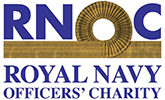Views from the Fleet Flagship 7
Posted on Friday 6 August 2021
Keeping connected with the ‘largest Wardroom afloat’ – presenting the 7th in our exclusive series, Views from the Fleet Flagship. This one focuses on the role of Lt Hux RN F35 Pilot.
Explain your role onboard
I’m one of the 10 front-line UK F-35 pilots, currently serving on 617 Sqn. Normally based at RAF Marham in Norfolk, 617 Sqn is a joint RN & RAF Sqn with personnel split between the two Services. We are embarked on HMS QNLZ for CSG 21 alongside our US colleagues of Marine Fighter Attack Squadron 211 from MCAS Yuma, AZ.
I was one of the first two RN pilots to fly the F-35B straight from the training pipeline and started the OCU with the USMC in Beaufort, SC in 2017. Since then I’ve served on the Front Line with 617 Sqn, recently having had my tour extended to the end of CSG 21. I am a four-ship lead and the mission planning SME for the Sqn. Most of my time outside of flying is spent planning and debriefing sorties and helping to run the F-35’s complex array of mission planning, cryptographic and data-link requirements.
I’m also the Divisional Officer to 10 ratings split between RN and RAF and across the Sqn’s trades of mission support, engineering and flight equipment. In my downtime I’m studying for an application to undertake the experimental test pilot course at Boscombe Down and split my time between the gym and running on the flight deck to let off steam.
What has the ship been up to in the last fortnight?
The deployment has thus far been exceptional for 617 Sqn and for maritime fixed-wing aviation full stop. Since May we’ve taken part in 7 multi-national exercises, doubled our monthly average flying rate compared with being ashore and participated in Operations hundreds of miles from the task group. As many will be aware, our time on Op SHADER was only the second UK F-35 operational deployment and the first ever from a UK warship. An especially momentous occasion as this was the first fixed-wing operational flying from a UK warship in more than a decade and the UK is now only the second nation in the world to operate low-observable aircraft from the sea.
Immediately after this intense period of flying we grabbed some eagerly received respite in Cyprus before proceeding into the Indian Ocean. Unfortunately, our planned air integration with the USS RONALD REAGAN was curtailed but we have continued operational readiness training during the long transit toward Singapore.
Having two F35B Sqns embarked hugely increases the value of training even when not working with partner nations. The number of aircraft that can be launched is consequently increased and thereby sufficient to simulate realistic air combat scenarios. Flying in the middle of the Indian Ocean is also excellent in terms of freedom airspace just as it is for sea room on the surface. This gives us much more flexibility to plan and execute in-house training, sometimes using virtual threats simulated by the F-35 in cockpit. We’ve also been using our Deployable Mission Rehearsal Trainer (DMRT) currently resident on the aft mezzanine in the hangar. This includes practice missions, developing new leadership qualifications and improving integration with appropriately cleared fighter controllers both from 820NAS ASaCs flight and the QNLZ Ops Room. Fortunately the sea state and ship’s stability has been very permissive and we’ve yet to have any vomit inducing moments whilst locked in a dark ISO container.
From an engineering point of view our Sqn is building tremendous experience operating F-35B on the QE class for such an extended period. Prior to this deployment approximately half of our engineers had not operated at sea before and the lessons we are learning will be invaluable as the Force moves forward. In addition, the F-35B itself is still relatively new to sea-going operations and data on the long term impacts of salt-water corrosion are being gathered and fed back to the manufacturer. One of the biggest challenges of recent weeks has been the combination of heat and humidity on deck, particularly when operating by day, where engineering teams are moving around in protective clothing in direct sunlight. Fortunately we’ve all had phys time on the flight deck to acclimatise and I think we’re all reaching a level of comfort with the climate.
Looking ahead, we’re hugely excited to arrive in south-east Asia and start operating our F-35s alongside the USN Pacific Command for the first time, as well as hopefully seeing a bit of Asia from the shore.



